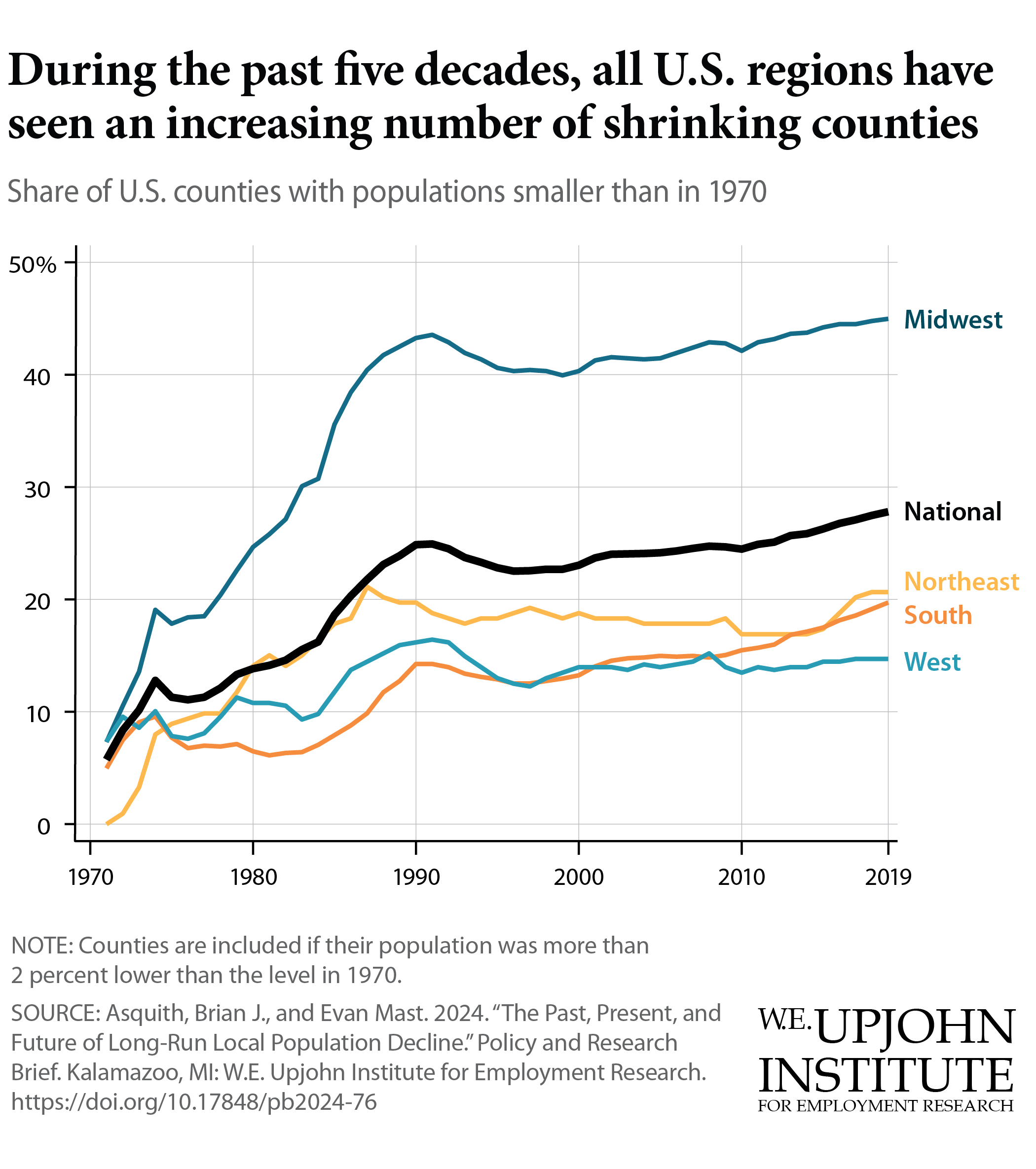
Local governments have few tools to attract new residents but can refocus on improving quality of life and services to keep current residents from leaving, new Upjohn Institute research finds.
People aren’t moving across the country as much as they once were. That makes local birth and death rates more important in determining which counties grow, Brian Asquith of the Upjohn Institute and Evan Mast of Notre Dame write in a new policy brief and paper.
With birth rates declining, county populations are declining with them. From 2010 to 2019, more than half of U.S. counties’ populations shrank.
Asquith and Mast find that if birth rates had stayed at their 1970 levels, the median county’s population in 2019 would have been 33 percent higher than it actually was. While just 9 percent of counties had more deaths than births in the 1970s, 45 percent of counties did in the 2010s. 
Shrinking populations challenge local governments with fixed expenses and declining tax revenues. Raising taxes in response risks creating a death spiral, as residents flee the tax increases and governments respond with yet higher taxes.
Most U.S. counties will continue to lose population, the researchers write. Depending on the projections, half to 62 percent of counties will have populations smaller in 2070 than they were in 2019. Some attractive rural areas that boomed with the rise of remote work during the COVID-19 pandemic may continue to buck the trend, but there aren’t enough people looking to relocate for this strategy to be broadly effective.
Local governments that instead plan how best to deliver services to shrinking populations may do a better job at retaining people. Some municipalities could also merge to serve their residents more efficiently, an argument Asquith and Margaret Bock detail in an earlier paper.

